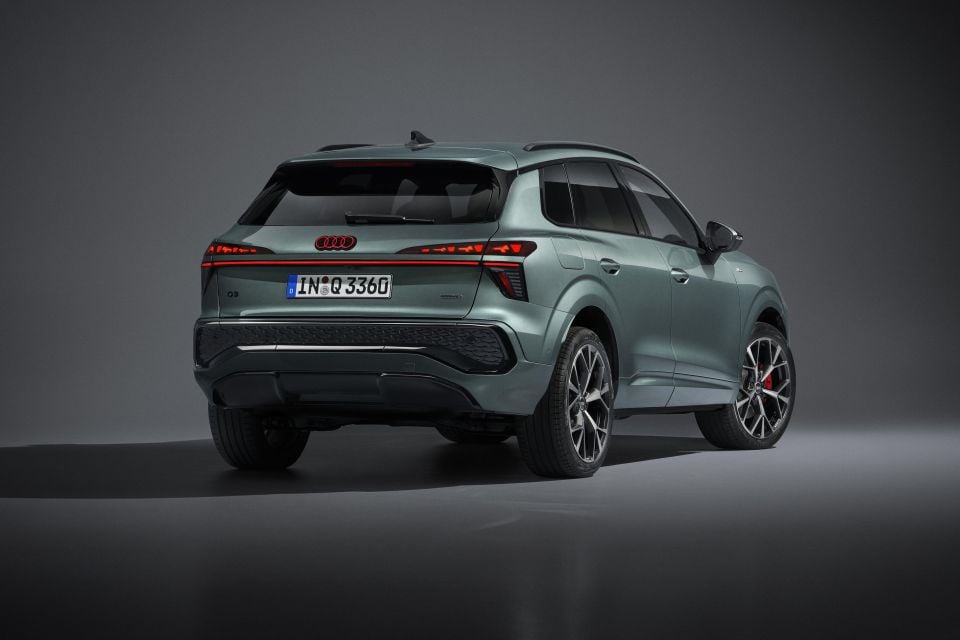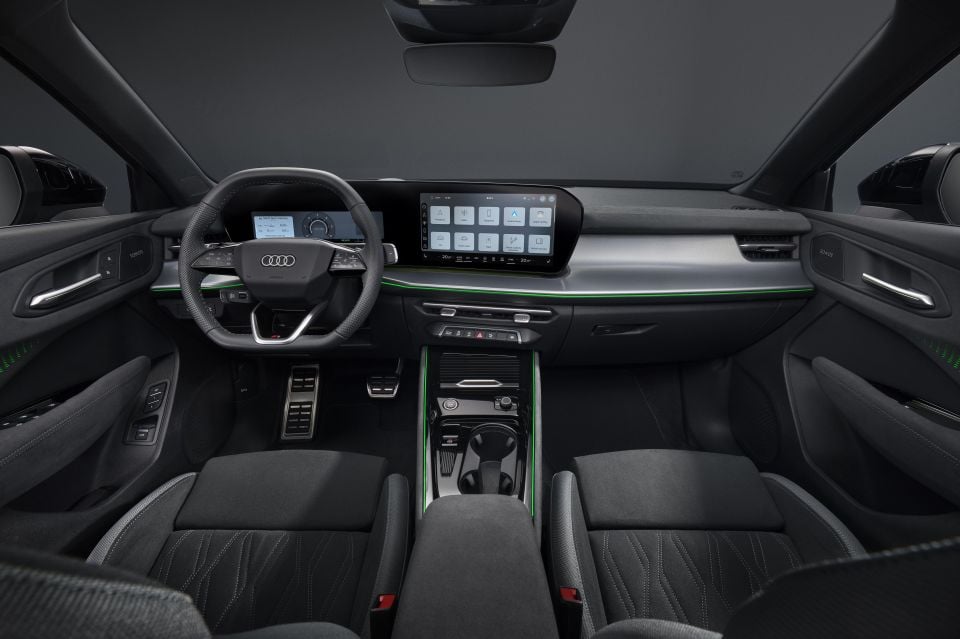The 2026 Audi Q3 has been revealed globally ahead of its September release in Europe, and its expected Australian introduction by mid-2026 – perhaps including a plug-in hybrid (PHEV) variant for the first time.
First images of Audi’s third-generation small SUV show it will wear the German brand’s latest design language as it looks to reinvigorate its lineup after slow global sales in 2024.
The new Q3 will ride on an updated version of the current model’s MQB Evo platform – also used under the Volkswagen Golf and Tiguan and the Audi A3 sedan and hatch– while offering 48V mild-hybrid, diesel and PHEV powertrains globally.
Audi Australia is expected to launch the new Q3 – one of its best-selling nameplates and a rival to the BMW X1 and Mercedes-Benz GLA – in early to mid-2026.
Hundreds of new car deals are available through CarExpert right now. Get the experts on your side and score a great deal. Browse now.
When contacted by CarExpert, Audi Australia could not confirm whether the Q3 local lineup will include the PHEV, which will be launched as an ‘e-Hybrid’ variant in Europe by the end of this year.
If it was to offer the plug-in Q3 here it would give Australian Audi showrooms PHEV versions across multiple SUV segments, including its volume-selling Q5 and Q8 lines.
The option of plug-in hybrid power locally seems sensible given PHEV sales in Australia nearly doubled in the first three months of 2025.
A diesel engine choice for the Q3 – last offered in Australia in 2018 – is not planned for the local Q3 lineup, while the automaker is yet to confirm if a Sportback body style will once again be offered with the new-generation Q3.

In Germany, the 2026 Q3 will have a starting price of €44,600 (A$79,362) before on-road costs, which is around €10,000 (A$17,794) higher than the current model.
In Australia, the current Q3 range starts at $54,600 before on-road costs for the entry-level 35 TFSI, excluding end of financial year or model-life runout promotional offers.
The increased list price in Germany reflects Audi’s plans to push more upmarket with lower volume, higher profit vehicles as part of a revised strategy that saw it abandon its previous target to sell only EVs from 2032.
Audi has not confirmed dimensions for the new Q3, but has said it will offer 488 litres of cargo space, expandable to up to 1386L with the second-row seating folded – less than the current model’s 675/1525L.

The current Q3 has a 2680mm wheelbase and measures 4484 long, 1848mm wide and 1616mm high.
Audi describes the exterior design of the new Q3 as “more emotional” while maintaining the brand’s signature single-frame grille and integrated headlights.
LED headlights – which include 25,600 individual ‘micro-LEDs’ in each module – enable better lighting as well as co-ordination with driver assist systems, while OLED tail-lights will be an option for the first time.
A ‘controllable cool air intake’ and unique bumper styling are found on the sportier S-Line grades, with wheel sizes spanning from 17- to 20-inches in diameter and 215-235mm wide. A 0.30Cd drag coefficient betters the current Q3’s 0.32.

The Q3 e-hybrid PHEV will be the most powerful and most expensive Q3 available at launch in Europe, priced at €49,300 (A$87,658) and making a combined total of 200kW of power and 400Nm of torque.
Power comes from an 85kW/330Nm electric motor and a 1.4-litre turbocharged four-cylinder petrol engine. A seven-speed dual-clutch automatic transmission is standard and it will only be offered in front-wheel drive form from launch.
Audi says the vehicle’s new 25.7kWh battery is nearly twice the capacity of the nickel-manganese cobalt pack in the previous Q3 PHEV sold overseas, but remains packaged in the same space as before.
Offering an electric-only range of 120km (WLTP), it can be DC fast-charged at up to 50kW, delivering an 80 per cent top-up in less than 30 minutes.

A 2.0-litre four-cylinder turbo-petrol engine with 195kW/400Nm outputs, this time matched with a seven-speed dual-clutch auto and quattro all-wheel drive, will also be offered, while Audi has also said a 150kW/320Nm petrol engine will join the European lineup later.
Entry-level variants will kick-off with a 1.5-litre turbo-petrol four with 48V mild-hybrid technology.
The engine will employ ‘cylinder on demand’ technology – Audi-speak for cylinder deactivation, in which the second and third cylinders are paused during slow-speed and low-load driving conditions.
The cabin comprises a ‘soft wrap’ panel extending the full width of the windscreen, with the so-called ‘digital stage’ including an 11.9-inch digital instrument cluster and 12.8-inch curved central touchscreen.

There’s also a head-up display as well as illuminated laser-cut door panels, flat interior door handles and an uncluttered centre console, while acoustic glazing on the front side windows is designed to improve refinement.
The Q3 will use Android Auto OS (Operating System) with Artificial Intelligence (AI) enriched voice commands and operations, with an AI assistant graphically illustrated in the digital instrument cluster.
Driver assistance systems include automatic parking, traffic sign recognition and autonomous emergency braking (AEB), as well as active lane change assist with inputs guiding the steering, braking, acceleration and vehicle speed.
Audi also says its Emergency Assist system can take over the vehicle in scenarios where the driver no longer reacts, bringing the vehicle to a stop on the roadside.
Further details of the 2026 Audi Q3 are expected ahead of its Australian launch in 2026.
MORE: Everything Audi Q3


